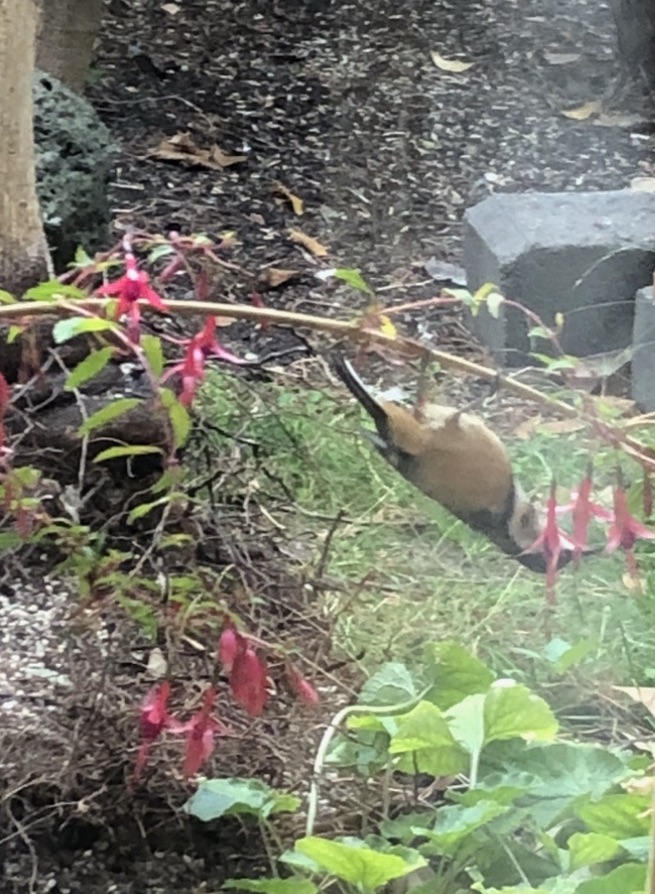Thank you for sending your Birds in Backyards sightings to us. Lorraine captured a few snaps of the Eastern Spinebill in her backyard recently.
Regularly connecting with nature is a vital part of a healthy, balanced life, and yet this connection seems increasingly to elude too many of us living in sprawling cities and suburbs. How do we redress this situation and encourage people, particularly our children, to spend time immersed in the wonders of the natural world?
One way is to investigate the nature in your own backyard. The array of creatures that call your backyard home or drop by to visit are amazing. Curiosity about our feathered friends can lead to learning about habitat and the importance of symbiotic relationships between plants and animals. Everything is interconnected. This visitor is taking nourishment on a fuchsia. This gives you some idea of just how small this bird is and how important flowers are as a food source for many. Flowers provide so much more than decorative colour in a garden.

Eastern Spinebill
Scientific Name: Acanthorhynchus tenuirostris
The Eastern Spinebill is most easily recognised by its very long, fine, down-curved beak and energetic flight, during which its white outer tail feathers are prominent. Males have a grey-black crown which extends in a black line on either site of the breast. The breast and throat are white, with a rufous patch in the centre of the throat. The wings and lower back are dark grey and the underparts and upper back are buff. Females are similar to males but have less distinct markings.


Leave a Reply